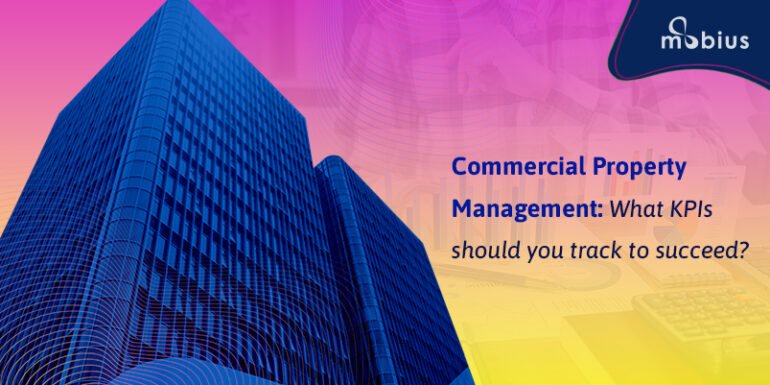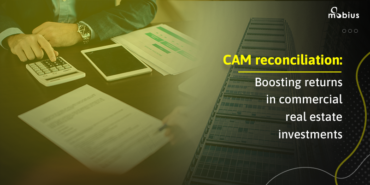The real estate industry is a major sector, crucial for other industries to function. Leading a commercial property management company requires solid organizational and communication skills. Property managers should understand the local market well and be able to make smart investment choices.
Some companies have limited employees; some operate independently, while others have extensive portfolios. No matter the size of the business, staying on top of property management is imperative to maintain a high success rate.
Therefore, property managers and realtors need to keep tabs on specific metrics and management plans for tracking, analyzing, and optimizing their commercial real estate business.
The only difference between successful and ordinary real estate companies is that the former imposes the necessary KPIs to strategize and identify improvement areas.
Real estate is an extensive industry; the same applies to performance metrics. KPIs differ based on the company’s role. For example, investors can keep tabs on market-oriented or risk-analysis KPIs that matter the most. But for realtors or property managers, property unit efficiency and client reviews are sufficient KPIs.
By keeping track of specific key performance indicators (KPIs), you can measure your success objectively and discover where things are going well and the areas that need improvement. This blog will provide a basic understanding of key performance indicators and metrics you must track for better commercial property management.
What are Key Performance Indicators (KPIs)?
Key Performance Indicators (KPIs) determine the quantitative measures of a business or an individual. In the real estate industry, KPIs can help investors and property managers to identify their opportunities and provide data insights to make informed decisions.
Additionally, property managers handle financial transactions for real estate businesses. By evaluating the crucial metrics, they can get valuable insights into the business deal size and scalability to set their priorities. KPIs also help realtors and property managers communicate transparently with clients and facilitate teamwork toward established goals.
Given the current economic situation and competition, it is no surprise that most real estate companies need KPI tracking. The purpose is to monitor their sales data and understand the optimal leasing flow and property management processes.
What makes KPIs so crucial in property management?
Now that we know about the term Key Performance Indicator and its importance in the real estate industry, let’s understand the significance of KPIs in commercial property management. As mentioned earlier, property management KPIs help your real estate management business measure quantifiable performance periodically and benchmark against your competition.
In general, property management KPIs are split into three categories:
Property performance KPIs – Measure the performance of the rented property managed by your company.
Operation performance KPIs – Measure how well your property management company is operating in a period.
Financial performance KPIs – Measure the financial health of your property management company.
Why should property managers be aware of KPIs?
Apart from the insights offered by property management KPIs, property managers and companies who recognize the importance of the KPIs gain additional benefits. The benefits are as follows:
Informed decision making
Accurate information is essential for informed decisions. By analyzing KPIs, you can know when to grow and build revenue.
Competitive edge
You can thrive in highly competitive markets by identifying your strengths and weaknesses.
Profitability
Commercial property management KPIs indicate which areas of your business are most profitable. Furthermore, they determine where your profit evaporates.
Transparency
KPIs can be helpful when preparing property owners’ reports.
Problem identification
KPIs help cut inefficiencies, eliminate complicated procedures, and identify improvement opportunities.
Progress tracking
By analyzing KPIs, you can quantify how your business has progressed toward goals and how your business plans have performed.
Clarity and motivation
Communicating the business goals based on KPIs and plans to change the strategy at the company level can reduce learning gaps and keep your team up to date with the company’s performance. KPIs help companies better understand their performance and encourage employees to achieve their goals.
Important KPIs every property manager should track
Occupancy and vacancy rate
A property manager should keep records of occupancy rates from time to time. Setting the occupancy rate as a benchmark and comparing it to the market average will help you grow multifold in the competitive market. A low occupancy rate may indicate that you need to rework marketing strategies.
Occupancy rate = Property units rented / Total available units
Here, income depends on unit occupancy. You should always keep track of the occupancy rate to ensure you get the actual profit from the properties rented. Moreover, it would be helpful to understand the percentage of occupied units.
The vacancy rate is inversely related to the occupancy rate. Vacancy rate refers to the ratio of occupied units to available units. Remember that if your occupancy rate exceeds the average market value, consider the following question.
Do you charge enough rent?
You can verify the above question by comparing your occupancy rate to other property management KPIs.
Tenant turnover rate
Tenant turnover rate in a year refers to how many tenants move out of the property. A property manager should keep track of the turnover rate of their tenants.
How to calculate the tenant turnover rate?
In a year, turnover rate = (No of tenants moving out/Total number of tenants) * 100
A higher rate may indicate that something is amiss in your property management. Here are some questions that you may consider as the reason for the higher rate.
Do you charge too much rent?
Is the tenant’s concern addressed promptly?
Do maintenance and repairs cost a lot?
Do you need any essential amenities?
Lastly, consider asking your tenants about the reason for moving out or if they have any feedback.
The tenant turnover rate is crucial because it costs time and money.
Acquisition cost
An acquisition cost determines the amount spent on acquiring a new tenant yearly. This KPI also allows you to evaluate your business development strategy and reduce costs while maximizing opportunities.
To calculate the acquisition cost
Cost of tenant acquisition = amount spent on tenant acquisition/number of acquired tenants
Overall, the tenant acquisition cost will let you know if your expenses serve the purpose or go down the drain.
Net Operating Income(NOI) and revenue growth
Financial KPIs are vital for property management business development. To calculate NOI, you subtract the actual expenditures on maintenance and marketing from the total income.
Net operating income reveals the actual business profit and helps optimize your business performance by trimming the expenditure costs.
Net operating income = Total income – operating expenses
If the NOI value outpaces your income, consider minimizing the expenditure and reworking the budget.
Real estate managers track net revenue from property management lease agreements. However, it is vital to analyze other sources of income as well. Even though rent is one of the most significant revenue streams, property managers should constantly consider ways to increase cash flow. This KPI will allow you to identify revenue-sourcing areas and ways to earn them.
What other KPI metrics can you track to improve commercial property management?
KPIs can help you measure staff performance, identify industry trends, and develop strategies to maximize profitability. Besides the above-mentioned metrics, you can still track others to ensure your commercial property remains competitive and profitable.
Lists of other KPI metrics,
- Conversion rate
- Average arrears
- Net Promoter Score (NPS)
- Maintenance response time
- Average maintenance costs per property
- Average rent
- Properties win vs. lose
- Percentage increase in properties
- Average days-to-lease
- Percentage referral customers
- Staff productivity and work satisfaction
- Customer service
Final Note
Commercial real estate management KPIs are helpful performance metrics for evaluating a business. In addition to measuring business goals, they can help harmonize your strategies based on the areas you outsmart and underperform.
Tracking KPIs improves business performance and differentiates you from your competitors. Quantifiable data is all you need, but making it practical is the key. However, there’s much more to consider than KPIs which require professional assistance.
Our company experts can relieve your burden and help you focus on business development while monitoring these KPIs simultaneously. Our experience and expertise can provide you with the most effective use of your data. For more information, contact us.






